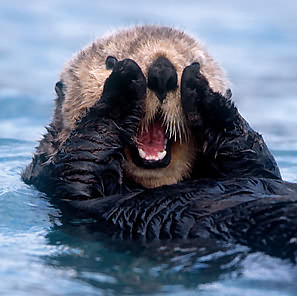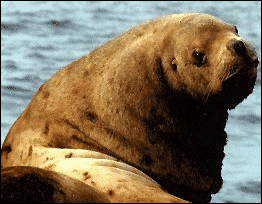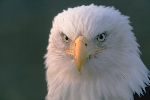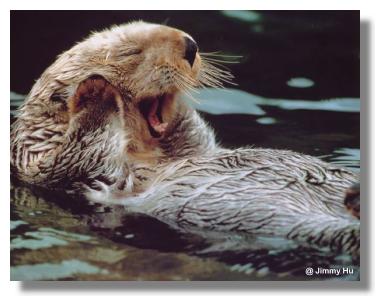NAVIGATION

The Problem

Ecological Problem:
There are many ecological problems plaguing the
Aleutian Islands. It has been said that the eco system in the islands has begun
to collapse. This beautiful place used to be home to sea otters, king crab, sea
lions, shrimp, and kelp. The Aleutian Islands used to contain the world's
largest population of sea otters and most of them, as well as other organisms,
have suddenly vanished. It is hard to determine what has happened to them
because there is was plenty of food, no evidence of the otters being sick, and
there aren't even any bodies to dissect to find an alternative cause. Between
1992 and 2000 the number of sea otters diminished by 70%. When marine
biologists started to study this in 1995 they found no signs of disease or
famine. After more and more research the answer became evident; there had been
a change in the food chain which caused a downward spiral.


Killer whales, or Orcas, have been known to
feed on sea lions and seals. In the late 1980's, the population of both of
these mammals decreased, and left the whales with nothing much to eat besides
the otters. Being that the otters are so small, it is estimated that only four
whales could have eaten up to 40,000 otters in just five years. Being that
there were far less otters around, the sea-urchin population exploded. These
enormous amounts of sea-urchin ate all the kelp which helped to feed snails,
starfish, rockfish, and other creatures. Having a decrease in kelp led to the
decline of these creatures as well.
There are a variety of explanations for the
changes that might have resulted in the downward spiral of the food chain. In
1977 there was a sudden warming of only two degrees Celsius, which might have
made all the difference. This slight change in temperature most likely caused
plankton, krill, and copepod to disappear. This was the primary food for
shrimp, crab, and smelt fishes such as the capelin and herring. Being that the
smelt began to disappear, the amount of food for sea lions and seals became
increasingly sparse. The smelt which are high in fat give baby mammals the fat
they need to survive. Without this food they often have a hard time making it
into adulthood. Warmer waters also began to draw in salmon, which brought
sharks, who also fed on the seals and sea lions. Many other bodies of water in
Alaska has escaped this problem due to different water currents that have kept
the warm water away.


Another problem that has been added to this situation is over
fishing. The United States government has put a ban on commercial fishing
around the islands to try and increase the food for the otters, sea lions, and
seals that are still remaining. There is also the concern of pollutants that
may be increasing the risks for the animals. There has been levels of the
pesticide DDT found in the bald eagles living on the island who have never left
the island in their life. This shows that pollutants are being transported into
the island either by water or air. The United States military also recently shut
down one of their bases located on the islands which is said to have contained
polychlorinated biphenyls (PCBs), which are known to harm animals immune and
reproductive systems.


It is clear that action needs to take place immediately to try and fix
this problem of the collapsing ecological state of the Aleutian Islands, but it
is difficult when the cause of the problem is unknown. There are a lot of
theories as to why this has happened, but there is nothing concrete. There
needs to be more research and tests conducted to try and bring this once
flourishing ecosystem back into a healthy state.
Information gathered with help from www.commondreams.org and www.fakr.noaa.gov.